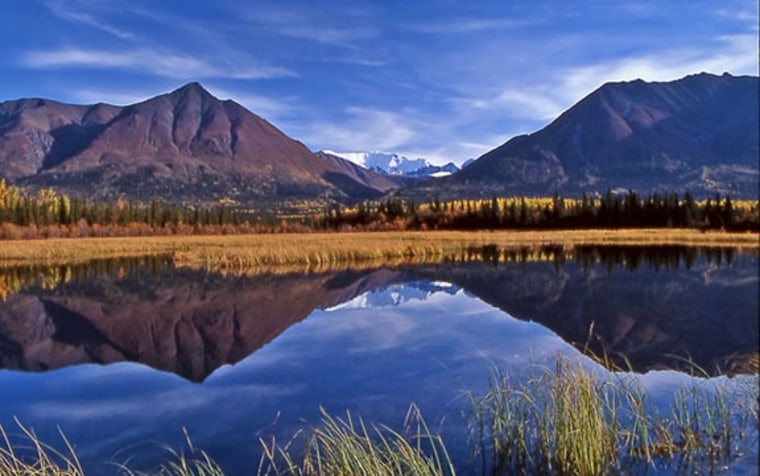“I’ve been in wilderness all around the world, but Wrangell-St. Elias was something new,” says Stewart Lee, a 35-year veteran Boy Scout leader from Pennsylvania who has visited all but a handful of the national parks.
Even his deep experience with and passion for the outdoors couldn’t prepare him for his first visit to the 13.2 million–acre Alaskan park in 2008. “It was like going back to the period of discovery, well before industrialization or even civilization. I suddenly felt like a babe in the woods.”
There are 58 national parks in the United States, many of them unsung natural oases full of majestic beauty. And while the marquee parks — Yellowstone, Grand Canyon, Yosemite — are well worth visiting, there are drawbacks, namely high admission prices and enormous crowds. An average of 26,542 people visit Yellowstone on a typical July day — nearly twice as many as Michigan’s gloriously isolated Isle Royale National Park gets in an entire year. The famous park charges $25 for a private, noncommercial vehicle, and provides a 7-day entrance permit. Isle Royale charges $4 per person, per day admission price.
Fewer park-goers simply mean a better out-in-the-wild experience. Barely 200 miles from the Great Smoky Mountains — which, with more than 9 million annual visitors, ranks as the nation’s most popular park — lies Congaree National Park, where the total visitorship for all of 2008 didn’t quite break 105,000, or less than a third of what the Smokies saw in its slowest month (January) that year.
What those lucky 105,000 visitors experienced, though, was a pristine tract of old-growth forest creating an unbroken hardwood canopy that has survived virtually unchanged since the days before Columbus.
The other parks on our list may also be little known, but they too are singularly spectacular, each incorporating special features. North Cascades National Park, for example, has the highest concentration of glaciers in the lower 48 states, and Utah’s Capitol Reef, deep in the heart of Utah’s former bandit country, is renowned for its colorful layer cake of mountains.
“Somebody looked at our aerial footage of Capitol Reef and said it was computer generated,” said Ken Burns, creator of the popular documentary The National Parks: America’s Best Idea, in an interview last September in the Salt Lake Tribune. “They can’t believe there is still a [pristine] place in the United States that looks like that.”
Burns is far from the first to sing the praises of these inspirational but little-known national parks.
“I never would have been president if it had not been for my experiences in North Dakota,” said Theodore Roosevelt of his frontier ranches now incorporated into the park that bears his name. Buffalo, bighorn sheep, and wild horses still roam these Dakota badlands just as they did in Teddy’s day.
So strap on your boots, follow in the footsteps of Lee, Burns, and Roosevelt, and get ready to hit the nature trails of some of our least-known national treasures.
